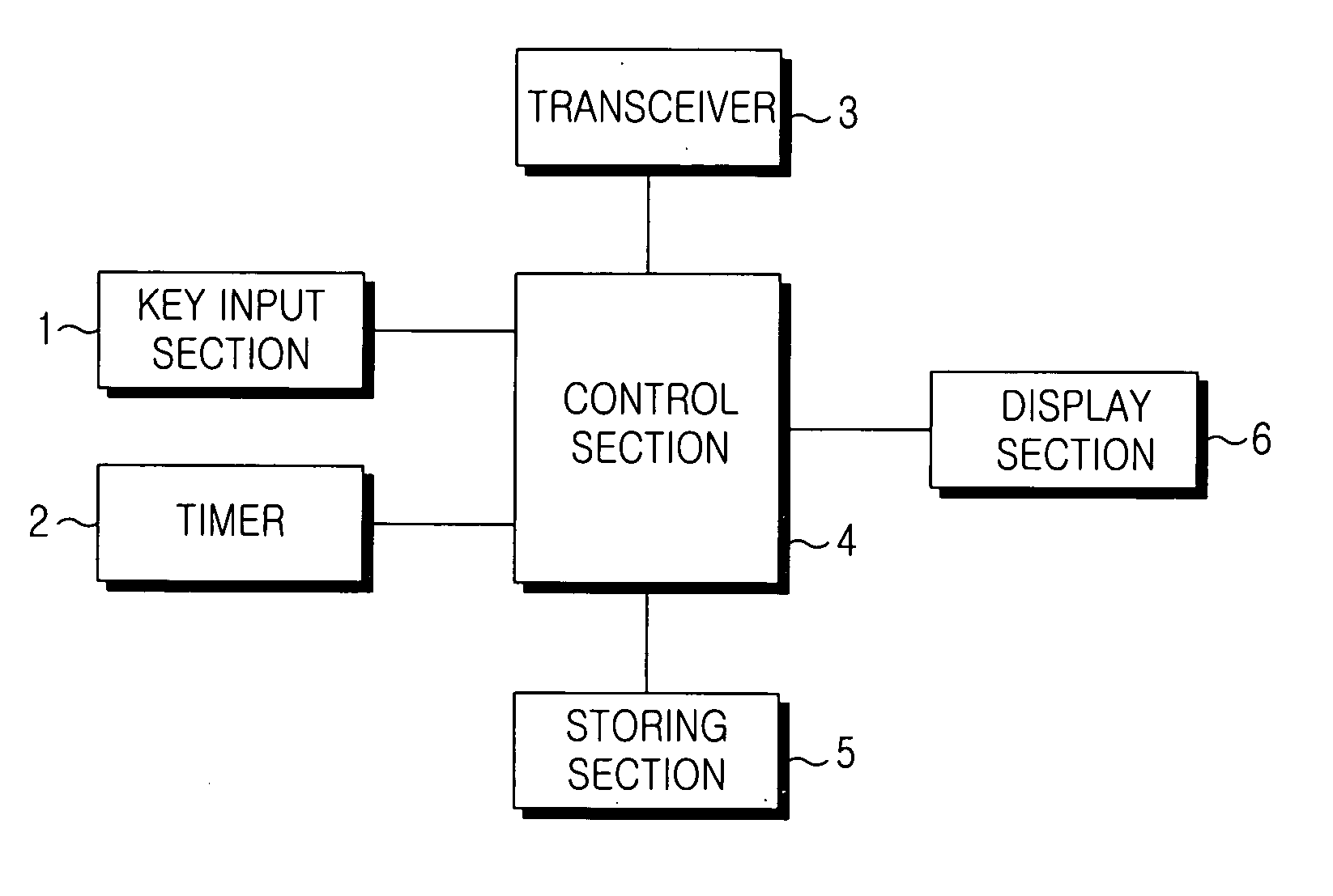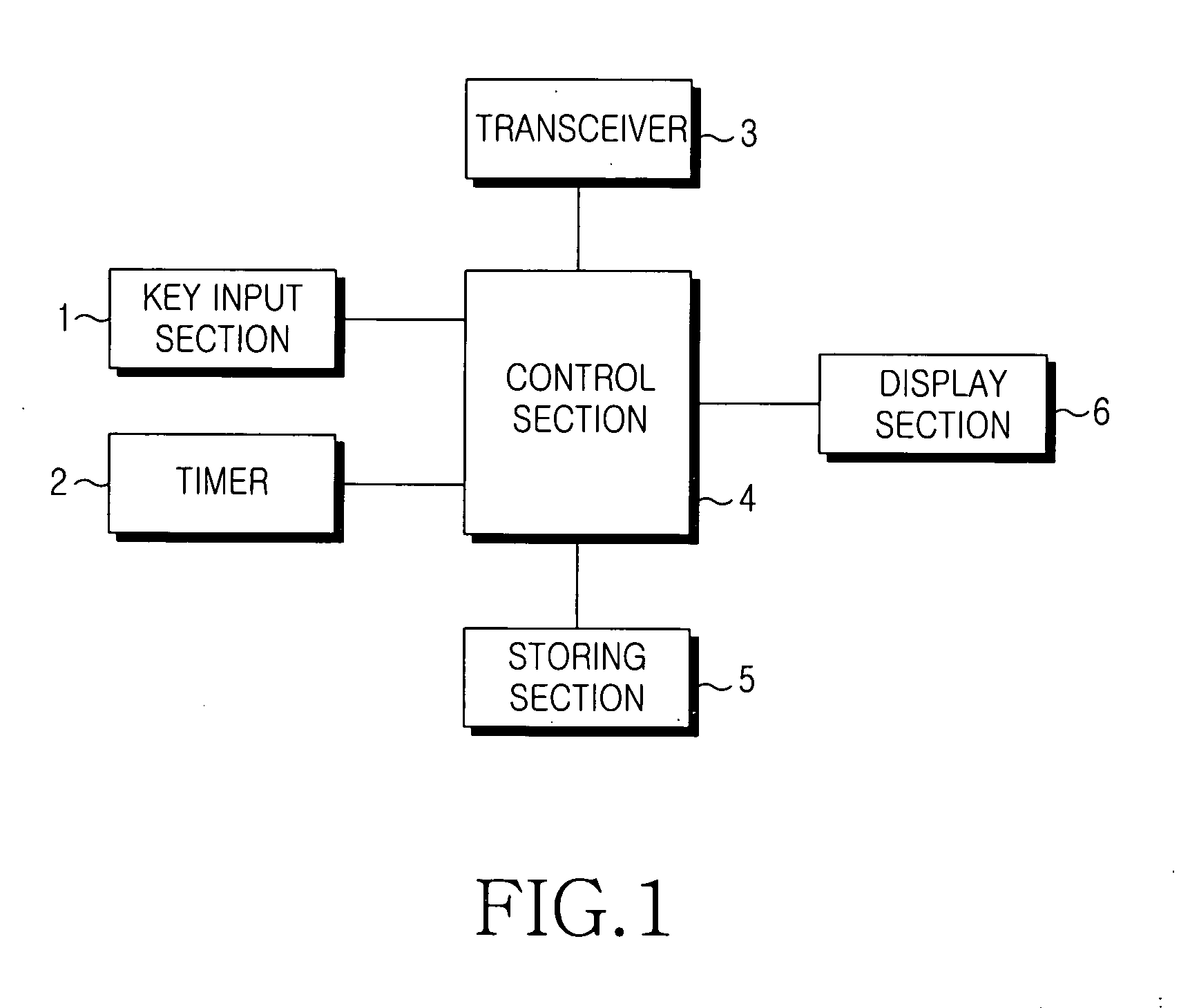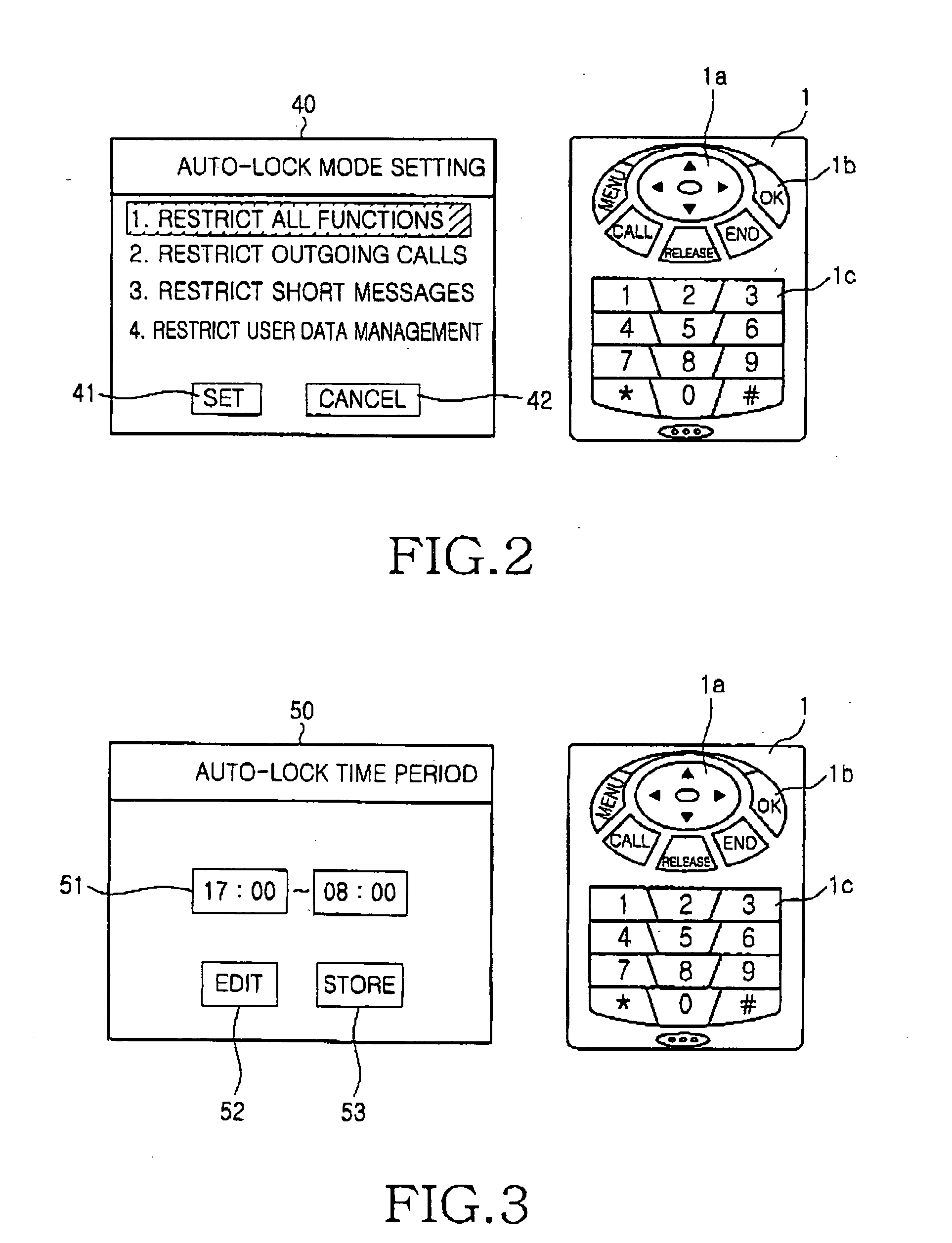Mobile terminal and method for auto-locking thereof
a mobile terminal and auto-locking technology, applied in the field of mobile terminals, can solve the problems of user's release or may never use the locking function, user's troublesome and inconvenient use, and user's failure to find the missing terminal, so as to prevent unauthorized use
- Summary
- Abstract
- Description
- Claims
- Application Information
AI Technical Summary
Benefits of technology
Problems solved by technology
Method used
Image
Examples
first embodiment
[0040]FIG. 6 is a flow chart showing a process for activating an auto-lock mode according to the present invention. At step S10, the control section 4 determines whether it is the time to activate the auto-lock mode. If it is, the control section 4 will activate the auto-lock mode to lock the selected functions at step S11. Otherwise, the control section 4 will inactivate the auto-lock mode to enable the user to implement any functions at step S12.
second embodiment
[0041]FIG. 7 is a flow chart showing a process for activating an auto-lock mode according to the present invention. In this embodiment, the auto-lock mode is activated during a set auto-lock time period to restrict all functions of the mobile terminal and semi-activated during other times to enable the user only to receive incoming calls.
[0042] At step S20, the control section 4 determines whether it is time to activate the auto-lock mode. If it is not the auto-lock activating time, the control section 4 will semi-activate the auto-lock mode at step S22. In the semi-activated auto-lock mode, the control section 4 detects whether the user inputs a demand to release the auto-lock mode at step S23. The user can input the demand to release the auto-lock mode through the key input section 1 in order to use various functions, such as a menu selection. When the demand is inputted, the control section may require the user to directly input a password or press a function key.
[0043] Upon det...
third embodiment
[0045]FIG. 8 is a flow chart showing a process for activating an auto-lock mode according to the present invention. Referring to FIG. 8, the control section 4 determines whether it is time to activate the auto-lock mode at step S30. If it is the auto-lock activating time, the control section 4 will proceed with step S32 to activate the auto-lock mode. If the control section 4 detects that the user has inputted a demand to release the auto-lock mode at step S33, it proceeds with step S34 to display a picture or icon (not shown) requesting the user to input a password on the display section 6. At step S35, the control section 4 determines whether a password inputted by the user through the key input section 1 is identical to that stored in the storing section 5. If the inputted password is determined to be identical to the stored password at step S35, the control section 4 will proceed with step S36 to release the auto-lock mode for a preset period of time. Upon lapse of the preset ti...
PUM
 Login to View More
Login to View More Abstract
Description
Claims
Application Information
 Login to View More
Login to View More - R&D
- Intellectual Property
- Life Sciences
- Materials
- Tech Scout
- Unparalleled Data Quality
- Higher Quality Content
- 60% Fewer Hallucinations
Browse by: Latest US Patents, China's latest patents, Technical Efficacy Thesaurus, Application Domain, Technology Topic, Popular Technical Reports.
© 2025 PatSnap. All rights reserved.Legal|Privacy policy|Modern Slavery Act Transparency Statement|Sitemap|About US| Contact US: help@patsnap.com



